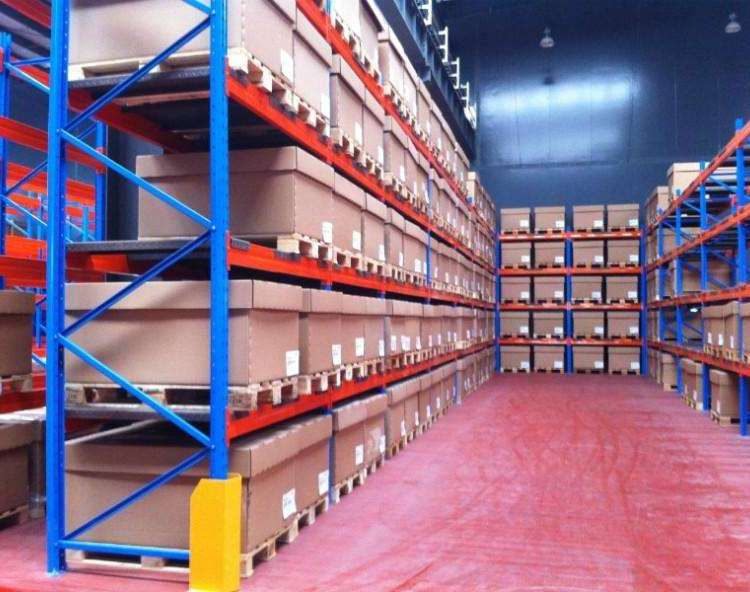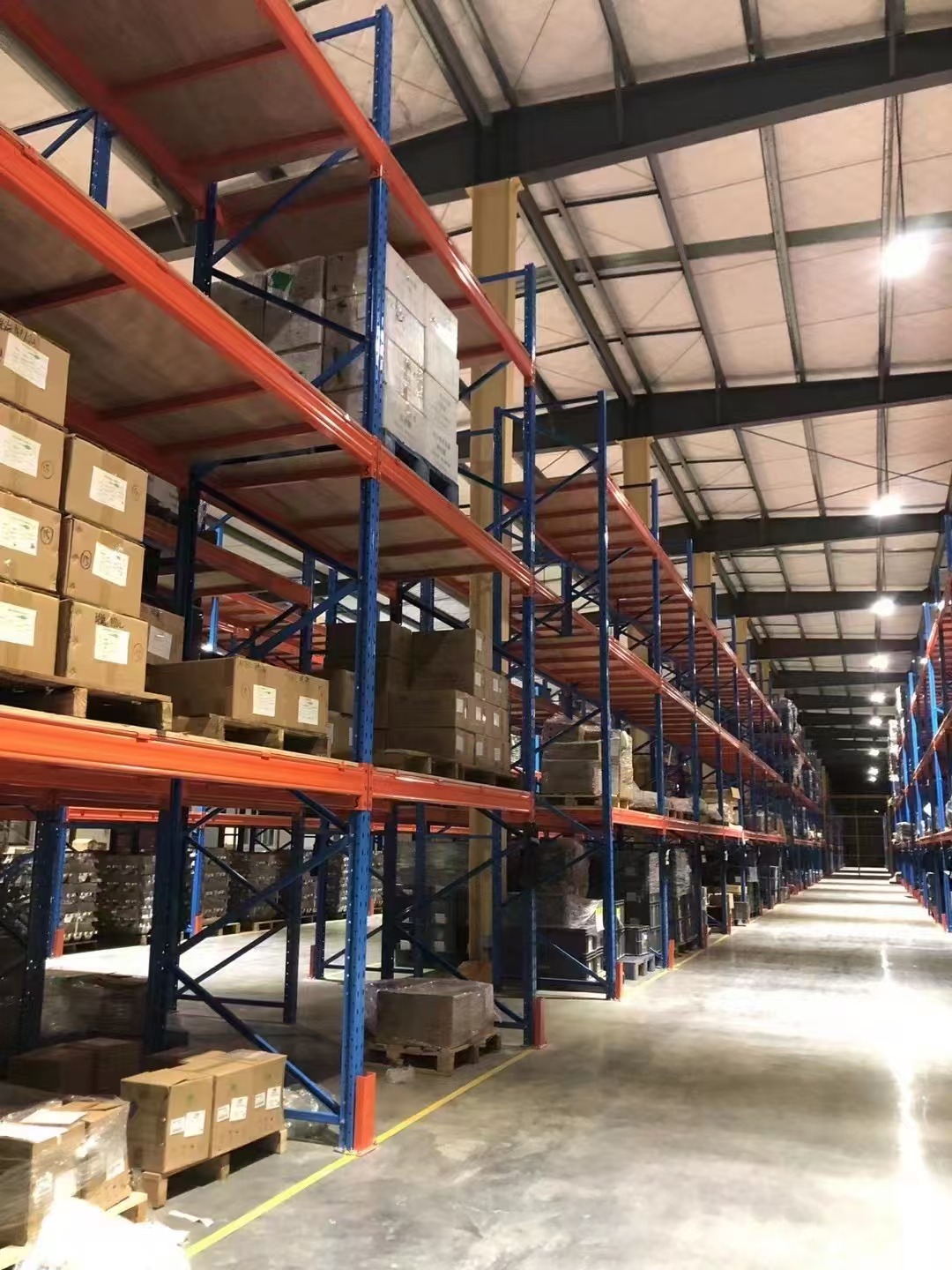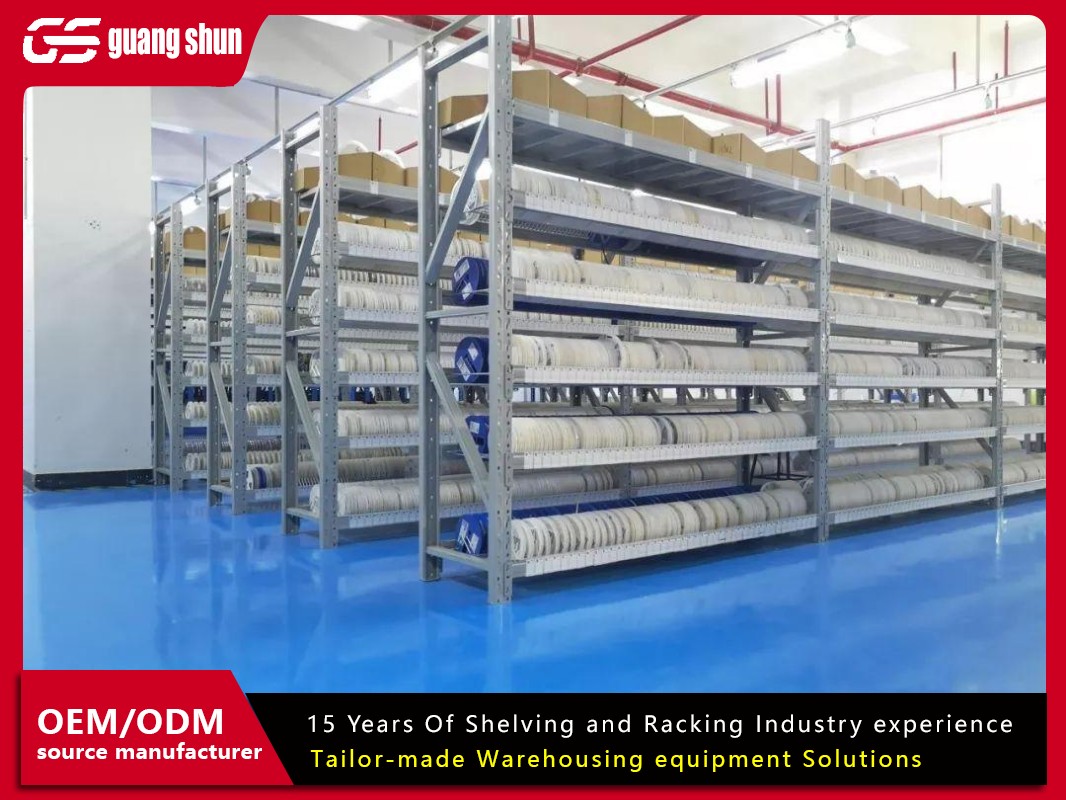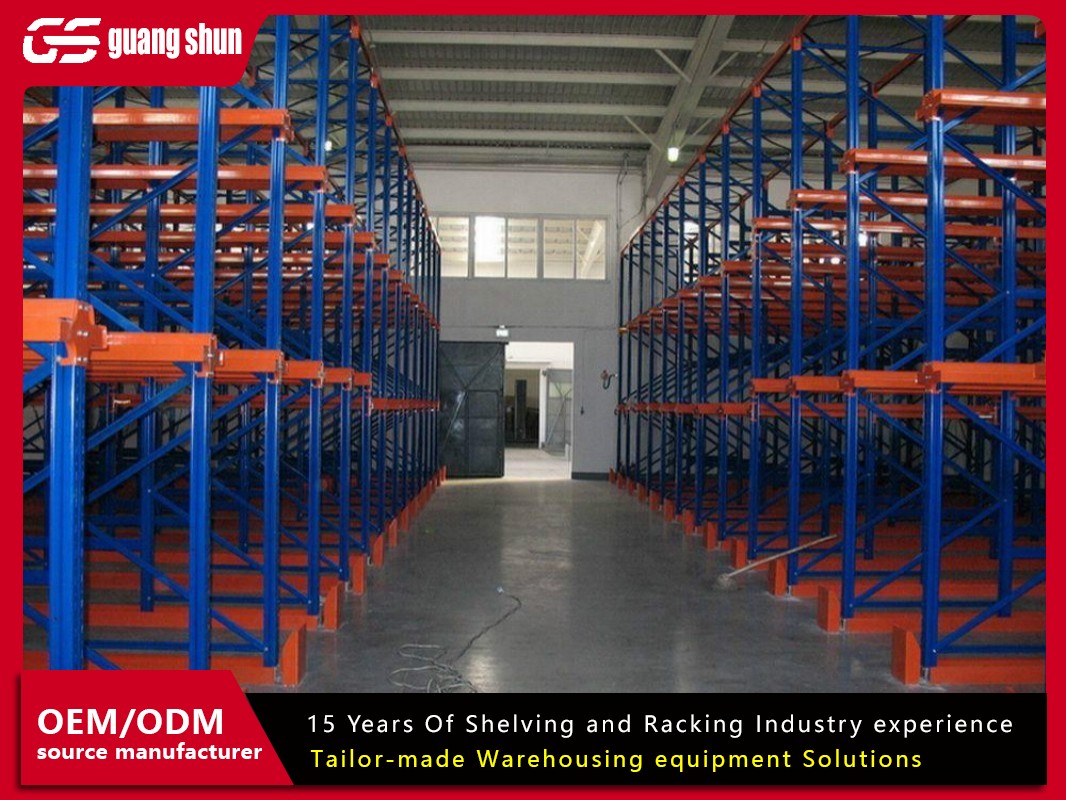In the relentless pursuit of maximizing warehouse space utilization and operational efficiency, drive in pallet racking stands out as a powerhouse solution for high-density storage. This specialized storage system is engineered for scenarios where space is at a premium, and large quantities of homogeneous products need secure, accessible storage. If you're managing bulk inventory, perishable goods with FIFO (First-In, First-Out) requirements, or simply battling soaring warehouse costs, understanding drive in racking is crucial. This comprehensive guide dives deep into its structure, operation, benefits, ideal applications, and critical considerations.

What is Drive In Pallet Racking? (The Core Concept)
Drive in pallet racking, fundamentally, is a high-density storage system where forklifts literally drive into the rack structure itself to deposit or retrieve palletized loads. Unlike traditional selective pallet racking which features accessible aisles on both sides of each storage lane, drive in racking consists of continuous vertical frames supporting multiple load-bearing rails on each storage level, running the depth of the lane. There are no aisles within the rack structure; instead, access is gained only from the front (and sometimes the rear) of each lane.
Think of it as a multi-level parking garage for pallets, but one where the forklift enters the "parking space" (the storage lane) to place or pick up the load. Pallets rest directly on these horizontal rails. This design eliminates the wasted aisle space found between back-to-back selective racks, dramatically increasing storage density within a given warehouse footprint. Drive in racking is particularly suited for large volumes of the same SKU (Stock Keeping Unit) or products with a limited number of SKUs stored in depth.
The Anatomy of Drive In Pallet Racking (Key Components)
Understanding the structure is key to appreciating its function and limitations:
1.Vertical Frames (Uprights): These are the backbone of the system, typically constructed from heavy-duty rolled steel. They run continuously along the length of the storage lane and support the entire load. Frames are much deeper (front-to-back) than selective rack frames to accommodate the rails and provide stability for the drive-in operation.
2.Horizontal Load Beams (Rails): Mounted perpendicularly between the vertical frames at each storage level. These beams support the pallets. Crucially, drive in racking uses continuous rails that run the full depth of the storage lane on each side, providing the runway for the pallets and the path for the forklift tires.
3.Guide Rails (Entry Guides): Positioned at the entrance (and potentially the exit) of each lane. These angled or vertical components help guide the forklift accurately into the narrow lane and protect the front uprights from impact.
4.Pallet Supports/Stops: Located at the rear of the lane (and sometimes at intermediate points) to prevent pallets from being pushed too far back. In FIFO configurations, rear stops ensure pallets are positioned correctly for retrieval from the opposite end.
5.Base Plates & Anchors: Secure the vertical frames firmly to the warehouse concrete floor, providing essential stability against the dynamic forces exerted by forklifts entering and exiting the lanes.
6.Row Spacers & Ties: Used in multi-row installations to connect adjacent rows together, enhancing overall system stability and rigidity.
How Drive In Pallet Racking Works (Operational Flow)
The operational principle of drive in racking is distinct:
1.Lane Loading (LIFO - Last-In, First-Out - Most Common):The forklift enters the designated storage lane from the front.It drives down the lane over the rails until it reaches the desired position.The operator deposits the pallet onto the rails at that level.To retrieve a pallet, the forklift enters the lane again. Since the last pallet loaded blocks access to pallets behind it, the last pallet placed in the lane is the first one retrieved (LIFO).This cycle continues, with each new pallet placed behind the previous one on the same level.
2.Lane Loading (FIFO - First-In, First-Out - Less Common, Requires Rear Access):Requires the drive in racking system to have access lanes at both the front and rear.Pallets are loaded into the lane from one end (e.g., the front).Pallets are retrieved from the opposite end (e.g., the rear).The first pallet loaded (at the front) is the first one retrieved (from the rear), adhering to FIFO principles.This configuration is essential for perishable goods or items with strict expiry dates but requires more space for the rear access aisle and is operationally more complex.

Ideal Applications for Drive In Pallet Racking (When to Use It)
Drive in pallet racking excels in specific scenarios:
1.Bulk Storage of Homogeneous Products: Its true strength lies in storing large quantities of the same SKU or a very limited number of SKUs. Think beverages (water, soda), packaged food, building materials (bricks, tiles), paper products, or certain chemicals.
2.Cold Storage Warehouses: Refrigerated and frozen storage environments are incredibly expensive per square foot. Maximizing storage density using drive in racking directly translates to significant cost savings on energy and space. FIFO configurations are often crucial here.
3.Space-Constrained Facilities: When warehouse expansion is impossible or prohibitively expensive, drive in racking offers the highest possible pallet positions per square foot compared to selective racking.
4.High-Volume, Low-Variety Inventory: Businesses with predictable stock movement patterns and large volumes per SKU benefit greatly. Examples include distribution centers for specific product lines or manufacturers storing raw materials or finished goods in bulk.
5.Archival or Seasonal Storage: For items that need long-term storage with infrequent access (e.g., seasonal decorations, archival records in bulk), the density of drive in racking is advantageous.
Advantages and Disadvantages of Drive In Racking (The Trade-Offs)
Like any system, drive in pallet racking presents a balance of pros and cons:
Advantages:
1.Maximum Storage Density: The primary benefit. Eliminating internal aisles allows for storing significantly more pallets in the same floor space compared to selective racking (often 60-75% more dense).
2.Reduced Storage Costs per Pallet Position: Higher density directly lowers the cost per pallet position for storage, including rent, utilities (especially in cold storage), and potentially building costs if designing a new facility.
3.Efficient Use of Cubic Space: Utilizes the full height of the building effectively, similar to other racking types.
4.Good for Large Volumes of Few SKUs: Optimizes storage for specific high-volume inventory profiles.
5.Structural Strength: Designed to withstand the rigors of forklifts driving into the structure when properly specified and installed.
Disadvantages:
1.Reduced Selectivity (Stock Accessibility): This is the biggest drawback. Access to specific pallets, especially deep within a lane, is limited. LIFO means you can only access the last pallet loaded. FIFO requires dual access and still doesn't allow random access to any pallet. Not suitable for high-SKU environments.
2.Lower Throughput Speed: Loading and unloading takes longer than selective racking. The forklift operator must carefully navigate into the lane, position the load precisely, and reverse out. This process is inherently slower than dropping a pallet into an open-faced selective bay.
3.Higher Risk of Damage: The close confines of the lane and the requirement to drive into the rack increase the risk of collisions between the forklift and the rack structure (uprights, rails) or between the forklift and stored pallets. Product damage can also occur if pallets are not placed squarely.
4.Requires Skilled Operators: Operating within drive in racking demands highly skilled and cautious forklift drivers due to the confined spaces and precision required.
5.Potential for Reduced Productivity: The slower load/unload times can impact overall warehouse throughput compared to selective racking.
6.Structural Cost: While cost-per-pallet-position is low, the initial cost per linear foot of the rack structure itself can be higher than selective racking due to the heavier-duty components (deeper frames, continuous rails).
Critical Safety Considerations for Drive In Racking
Safety is paramount when operating within drive in pallet racking:
1.Operator Training & Certification: Mandatory specialized training for operators on the unique challenges of navigating drive in racking lanes, including maneuvering, load placement, speed control, and awareness.
2.Impact Protection: Robust guide rails at the entrance of each lane are essential. Consider additional column guards or protectors on uprights near the lane entrance.
3.Speed Limits: Strictly enforce very low speed limits (often walking pace) within the racking lanes and approaching them.
4.Load Security: Ensure pallets are stable, undamaged, and within the specified weight and dimension limits for the rack design. Overloaded or unstable pallets are a major hazard.
5.Lane Depth & Height Awareness: Operators must be acutely aware of the lane's depth and the height of stored pallets to avoid collisions.
6.Regular Inspections: Implement a rigorous inspection program by qualified personnel to check for damage (bent rails, damaged uprights, loose anchors, damaged guide rails) before it becomes a critical failure. Immediate repair protocols are vital.
7.Clear Signage: Mark lanes clearly, indicate maximum heights, and display speed limits and safety reminders.
8.Floor Condition: Maintain a clean, level, and well-drained floor surface within the lanes to prevent forklift slippage or instability.
Implementing Drive In Pallet Racking: Planning and Best Practices
Successful implementation requires careful planning:
1.Thorough Needs Analysis: Precisely define inventory profiles (SKU count, volume per SKU, turnover rates - FIFO vs LIFO suitability), required capacity (pallet weight/dimensions), and projected growth.
2.Professional Design & Engineering: Engage a qualified rack manufacturer or engineer. The design must account for specific pallet sizes/weights, forklift dimensions/load capacities, seismic requirements (if applicable), and building constraints. Never modify or install without engineered drawings and approval.
3.Accurate Load Calculations: Specify the actual maximum loaded pallet weight, not just the product weight. Include pallet weight and potential packaging variations.
4.Forklift Compatibility: Ensure your forklifts (tire width, overall width, mast height, lift capacity at height) are suitable for the designed lane width and heights. Reach trucks or narrow aisle trucks are generally NOT suitable; standard counterbalance forklifts are typically used.
5.Seismic Considerations: In seismic zones, drive in racking requires specific bracing and anchoring details designed by an engineer.
6.Quality Installation: Use experienced, certified installers who strictly follow the manufacturer's specifications and engineered drawings. Proper anchoring is non-negotiable.
7.Ongoing Maintenance: Establish a clear maintenance and inspection schedule. Train staff to report any damage immediately.
Drive In vs. Other High-Density Systems
While drive in pallet racking offers significant density, it's not the only option:
•Drive-Thru Racking: Similar structure to drive in, but features access at both ends of every lane, inherently supporting FIFO without the operational complexity of dual-sided drive-in. Slightly lower density than pure drive-in due to the rear aisle, but offers better selectivity and flow.
•Push Back Racking: Uses nested carts on inclined rails. Pallets are stored 2-6 deep per level. Loading from the front pushes previous pallets back. Retrieval is LIFO but only requires front access. Offers better selectivity than drive in racking (access to multiple SKUs per bay) and faster throughput, though typically at a higher cost per pallet position and slightly lower density than deep drive-in lanes.
•Pallet Flow Racking: Dynamic system using wheeled or roller tracks on a decline. Pallets flow from the loading (high) end to the unloading (low) end by gravity. Enforces strict FIFO. Excellent throughput for high-volume single SKUs. Higher cost and complexity than drive in racking, but superior flow and selectivity within a lane.
•Mobile Pallet Racking (Mobile Aisles): Entire rows of selective racking move on rails, with only one aisle open at a time. Offers selective access and high density, but with higher cost and mechanical complexity.
Conclusion: Is Drive In Pallet Racking Right For You?
Drive in pallet racking remains a highly effective and widely used solution for achieving exceptional storage density in warehouses storing large volumes of homogeneous products. Its ability to maximize pallet positions per square foot directly translates to significant cost savings, particularly valuable in expensive environments like cold storage or urban warehouses.
However, the trade-offs – primarily reduced selectivity (LIFO constraint) and slower throughput – cannot be ignored. Implementing drive in racking demands a commitment to rigorous safety protocols, specialized operator training, and disciplined inventory management focused on high-volume, low-SKU profiles.
Before choosing drive in pallet racking, conduct a meticulous analysis of your inventory characteristics, operational workflows, throughput requirements, safety culture, and budget. Consult with qualified racking specialists and engineers to ensure the design is optimized for your specific needs and complies with all safety regulations. When applied correctly to the right inventory profile, drive in pallet racking is an indispensable tool for conquering the challenge of warehouse space optimization.







